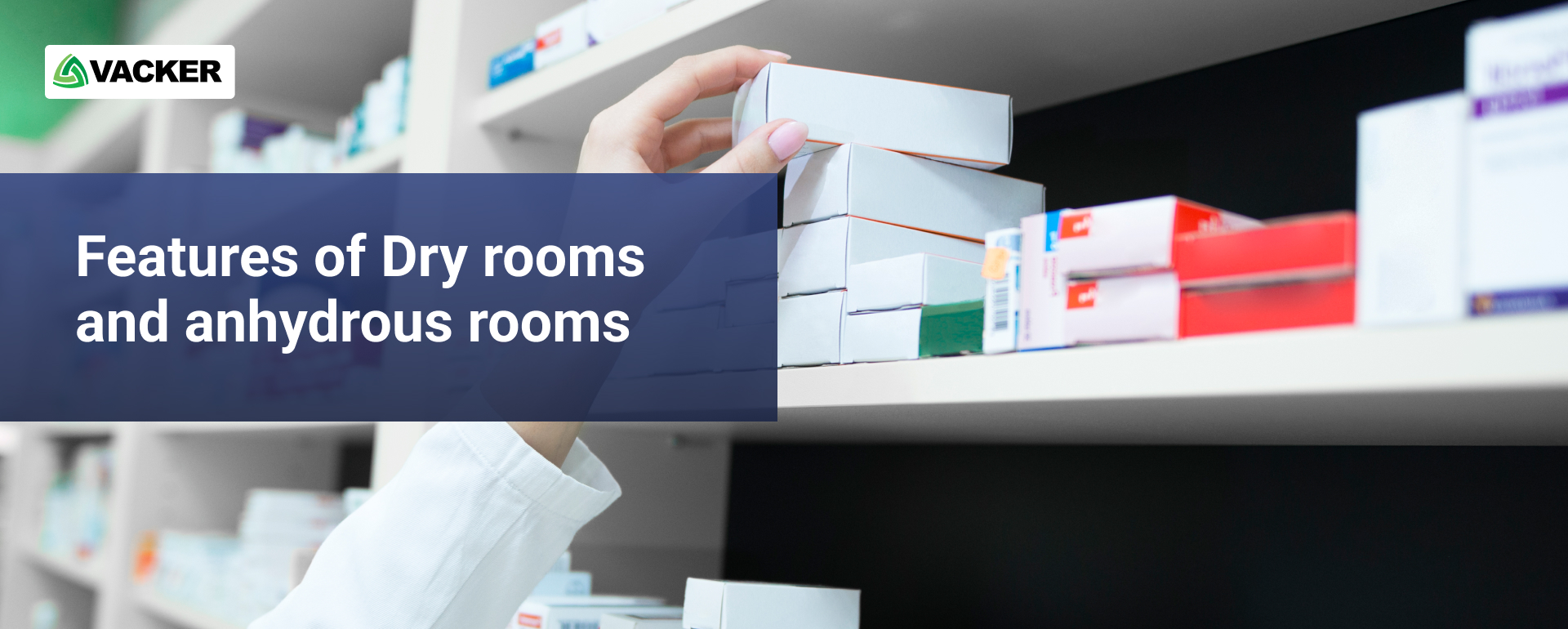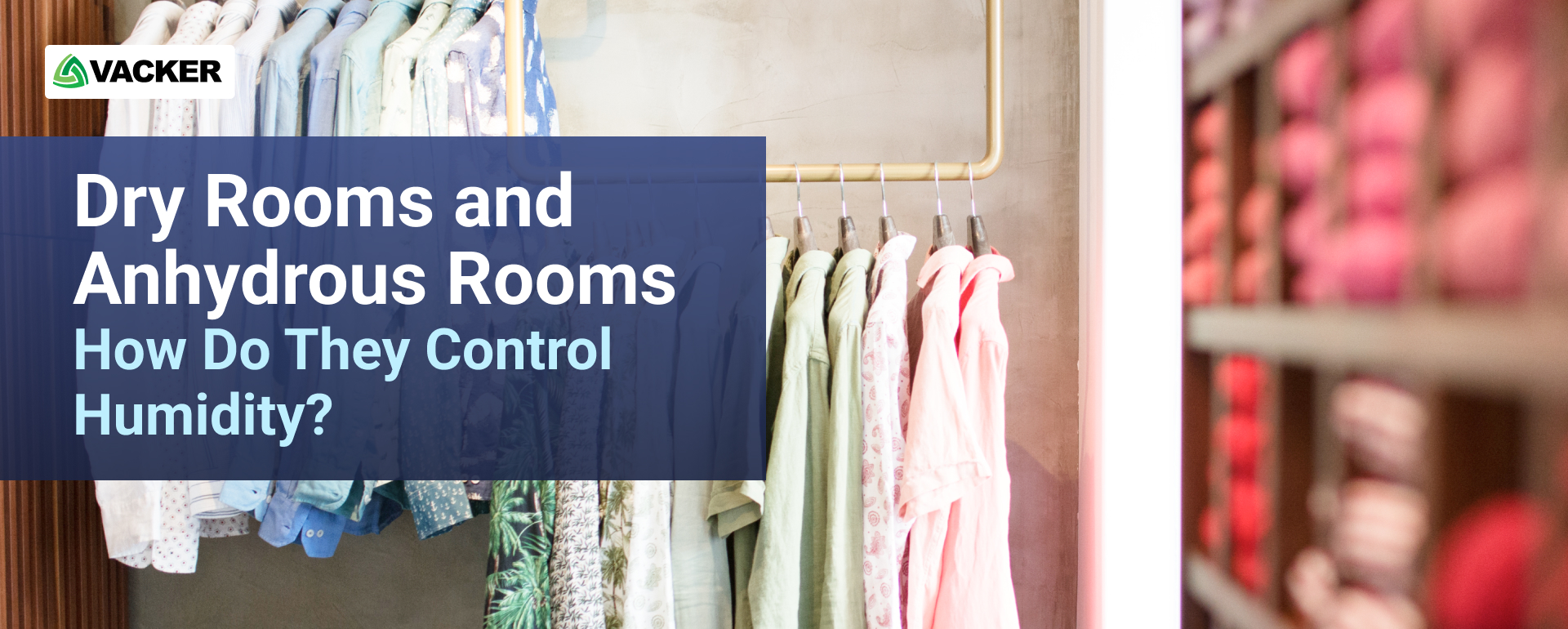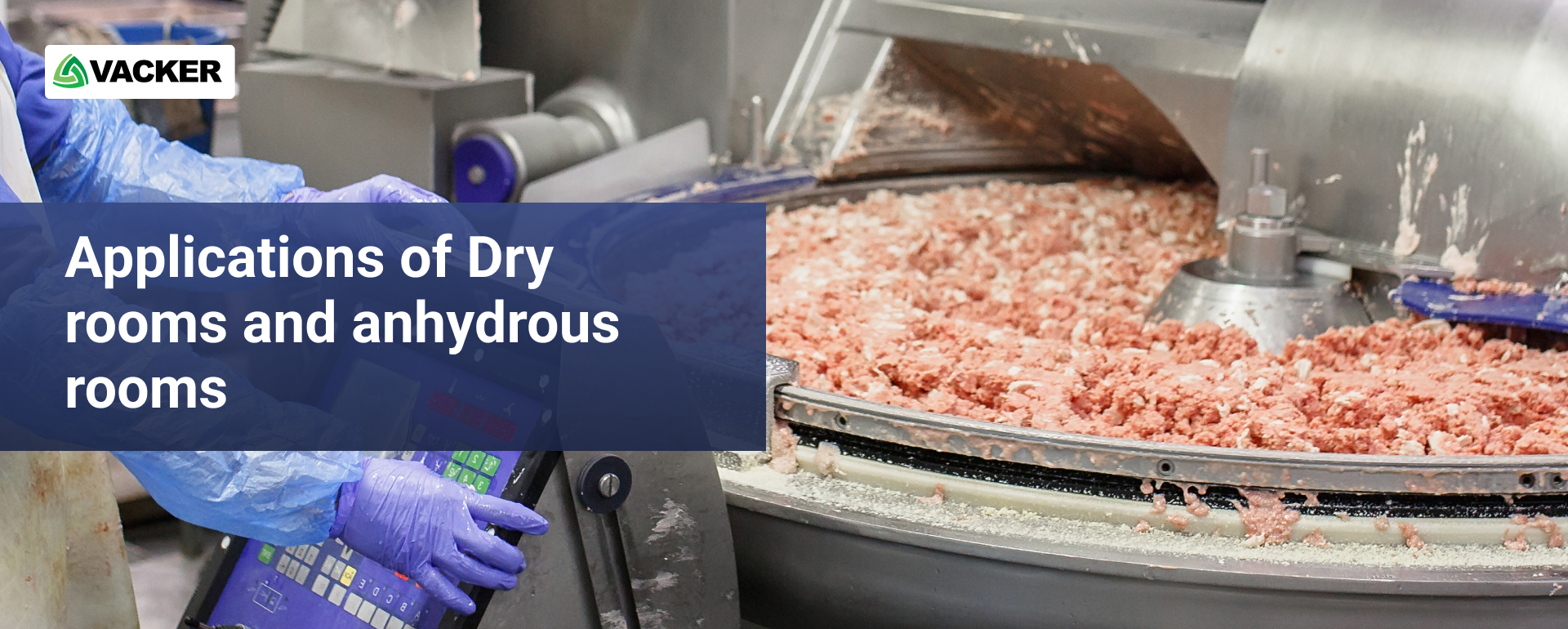Dry rooms and anhydrous rooms refer to controlled environments with extremely low levels of moisture or humidity. Dry rooms are designed to maintain a low relative humidity level, typically between 1% and 10%, to prevent moisture-related damage to sensitive equipment, materials, or products. They are commonly used in industries such as electronics manufacturing, pharmaceuticals, and aerospace.
Anhydrous rooms, on the other hand, are even drier and are designed to maintain an absolute humidity level of less than 10 parts per million (ppm) or 0.001%. These rooms are used in applications where even low levels of moisture cause problems, such as in the production of high-purity chemicals or in semiconductor manufacturing.
Both dry rooms and anhydrous rooms typically use specialized air conditioning and dehumidification systems to maintain the desired humidity levels, and access to these rooms is often restricted to authorized personnel wearing appropriate protective gear to prevent the introduction of moisture.
Features of Dry Rooms and Anhydrous Rooms
Dry rooms and anhydrous rooms are specialized environments designed to maintain low levels of humidity and moisture. These rooms are used in a variety of industrial and research applications where the presence of moisture interferes with processes or compromises the quality of products. The following are the features of dry rooms and anhydrous rooms that make them effective in controlling humidity.
- Humidity Control

The primary feature of both dry rooms and anhydrous rooms is their ability to control humidity levels. Dry rooms typically maintain humidity levels of 10-20% while anhydrous rooms are designed to maintain humidity levels below 1%. Achieving such low levels of humidity requires specialized equipment and construction techniques.
- Air conditioning unit
Air conditioning units that control the temperature and humidity levels of the air in the room. These units remove moisture from the air and maintain a constant temperature to prevent condensation. The temperature of the room is also important since warm air will hold more moisture than cold air.
- Specialized flooring and wall materials
The walls and floors of these rooms are often made of specialized materials that are resistant to moisture and humidity. These materials are chosen for their ability to prevent moisture from seeping into the room from outside. For example, walls may be made of concrete or other dense materials that do not absorb moisture, while floors may be coated with epoxy or other water-resistant materials.
- Absorb any moisture that may be present in the air
Anhydrous rooms include desiccant materials, such as silica gel, to absorb any moisture that may be present in the air. Desiccants work by adsorbing moisture onto their surface, effectively removing it from the air. The desiccant materials must be periodically replaced to ensure that they continue to work effectively.
- Airlocks
To further prevent moisture from entering the room, anhydrous rooms may have airlocks. An airlock is a small room or chamber with two doors that prevent the entry of moisture-laden air when someone enters or exits the main room. The airlock serves as a buffer between the outside environment and the anhydrous room, preventing any moisture from entering the main room.
Applications of Dry Rooms and Anhydrous Rooms
Dry rooms and anhydrous rooms have a wide range of industrial and research applications where the presence of moisture will cause problems. Let’s see some of the applications of dry rooms and anhydrous rooms.
Moisture damages electronic components during the manufacturing process, leading to costly defects and product failures. Dry rooms provide a controlled environment where humidity is maintained at low levels to prevent moisture from causing problems during the manufacturing process.
- Pharmaceuticals
Anhydrous rooms are used in the production and packaging of pharmaceuticals. Many pharmaceutical products are sensitive to moisture, and exposure to even small amounts of moisture will lead to product degradation or spoilage. Anhydrous rooms provide a moisture-free environment where pharmaceutical products will be produced and packaged with minimal risk of contamination.
- Chemical processing
Anhydrous rooms are also used in the processing of chemicals. Many chemical reactions are highly sensitive to moisture and are disrupted by the presence of water. Anhydrous rooms provide a dry environment where chemical reactions are carried out without interference from moisture.
- Food processing
Dry rooms are used in the processing and storage of food products such as cereal grains, dried fruits, and nuts. Moisture causes spoilage and mold growth in food products, leading to reduced quality and safety concerns. Dry rooms provide a controlled environment where humidity levels are kept low, preventing moisture from causing problems during processing and storage.
By providing a controlled environment where humidity is maintained at low levels, dry rooms and anhydrous rooms play a critical role in ensuring the quality and safety of products and processes. If you are involved in any of these industries or applications, it is important to consider the benefits of using a dry room or anhydrous room to maintain low humidity levels and prevent moisture from causing problems. Contact us today to know about the details according to your personalized requirements.
Vacker’s dry rooms and anhydrous rooms provide reliable solutions for industries that require strict control over humidity levels. With advanced technology and expertise in designing and installing custom environmental control systems, Vacker has become a trusted partner for businesses around the world. Whether it’s protecting sensitive electronics or producing high-purity chemicals, Vacker’s dry rooms and anhydrous rooms are built to meet the highest standards of performance and quality.


